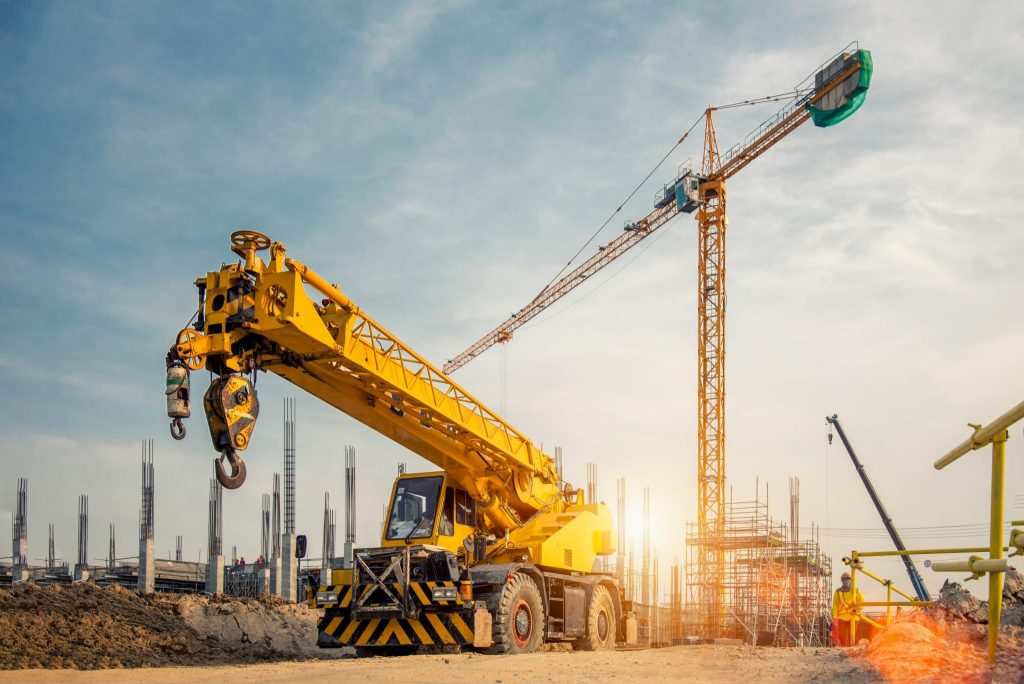Cranes play a crucial role in many industries, from construction to shipping. They are vital for lifting and moving heavy loads, making tasks more manageable and efficient. However, operating a crane can pose significant risks if not done correctly. CPN Training offers NPORS-accredited training courses designed to provide operators with the knowledge and skills needed to ensure safe crane operation. In this article, we will discuss essential guidelines for safe lifting with cranes.
Choose the Right Crane for the Job
Selecting the appropriate crane for a specific task is a crucial aspect of ensuring safety, efficiency, and successful completion of a project. There are several factors that must be taken into account when choosing a crane, and the operator must be experienced and qualified in order to operate the equipment safely and effectively.
- Lifting capacity: One of the primary factors to consider is the lifting capacity of the crane, which refers to the maximum weight the crane can safely lift. This should be carefully assessed against the weight of the load being lifted to prevent overloading the crane and causing potential accidents. It is essential to choose a crane with a lifting capacity that can easily accommodate the load, including any additional equipment or rigging required.
- Boom length: The boom length is another crucial factor that determines the crane’s reach and versatility. Depending on the worksite and project requirements, it is important to choose a crane with a suitable boom length that can reach the necessary height or distance to complete the task efficiently. Moreover, consider the potential need for extensions or jibs to provide additional reach when necessary.
- Load type: The type of load being lifted must also be considered when selecting a crane. Different loads, such as steel beams, concrete panels, or machinery, require different types of cranes or rigging attachments. It is essential to choose a crane designed to handle the specific load and equipped with the appropriate attachments to ensure safe and effective handling.
- Terrain and site conditions: The worksite conditions, such as ground stability, space constraints, and potential obstacles, play a significant role in determining the appropriate crane for the task. The crane’s mobility, type (such as crawler, all-terrain, or rough-terrain), and outrigger requirements should be taken into account to ensure safe operation in the given environment.
- Operator experience and qualifications: A skilled and qualified operator is crucial for the safe and efficient operation of a crane. The operator must understand the crane’s specifications, including its lifting capacity, boom length, and load type limitations. They should also be familiar with proper rigging techniques, safety procedures, and emergency protocols to avoid overloading the crane or causing accidents.
Rigging and Inspection
Before lifting any load, it is of utmost importance to guarantee that the rigging is secure and in excellent condition, as improper or damaged rigging can result in accidents, injuries, or damage to property. To ensure the rigging’s integrity, slings, shackles, and other rigging components should be thoroughly inspected for signs of wear, damage, and deformation.
This inspection process should include checking for frayed or cut fibres in synthetic slings, cracks or excessive wear in metal components, and proper alignment of all hardware. Any equipment found to be damaged must be either replaced or repaired before proceeding with the lift.
Properly Assess the Load
Operators should be familiar with the weight, dimensions, and centre of gravity of the load they are lifting. This information is necessary to correctly position and balance the crane and prevent overloading or tipping. Loads must be secured and properly balanced before lifting to avoid accidents.
Establish a Clear Communication System
Effective communication between the crane operator, signal person, and ground crew is a critical component of safe lifting operations, as it helps to coordinate tasks, avoid misunderstandings, and prevent accidents. Employing a combination of hand signals, radios, or other communication devices, such as headsets or visual aids, ensures that everyone involved in the lifting operation is aware of what is happening at all times and can respond accordingly.
To facilitate seamless communication, the entire team must understand and adhere to established communication protocols, which typically include standardized hand signals or phrases for various actions, such as lifting, lowering, or stopping the load. These protocols should be clearly defined and communicated during pre-lift meetings and safety briefings, with team members demonstrating their understanding and competence in using them.
Plan and Prepare the Lift
Before beginning any lift, the crane operator and the team should create a lift plan. This plan should outline the lift’s specific details, including the load’s weight, the crane’s positioning, and any obstacles or hazards that may be encountered. The plan should also include a contingency plan in case of emergencies or unexpected situations.
Monitor Weather Conditions
Weather conditions can significantly impact the safety of crane operations. High winds, rain, and lightning can create hazardous conditions for lifting. Operators should monitor weather forecasts and adjust their lift plans accordingly to ensure the safety of the crew and the load.
Maintain a Safe Distance
Crane operators and ground crew should always maintain a safe distance from the load and the crane’s swing radius. This helps to prevent accidents caused by being struck by the load or the crane’s boom. Additionally, operators should always use caution when working near power lines to avoid electrocution.
Continuous Training and Certification
Ensuring that crane operators have up-to-date training and certification is crucial for maintaining safety standards. NPORS-accredited training courses, like those offered by CPN Training, provide operators with the necessary knowledge and skills to operate cranes safely and efficiently.
Conclusion
Safe lifting with cranes is a combination of proper planning, equipment maintenance, communication, and operator training. By adhering to these essential guidelines, crane operators and businesses can ensure the safety of their teams and the success of their projects. CPN Training offers a range of NPORS-accredited training courses to help businesses stay compliant and promote a safe working environment.












